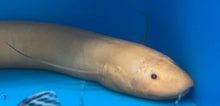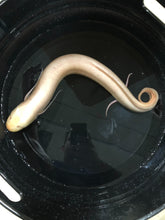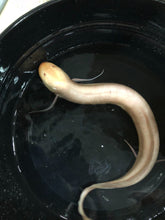Description
The genus Protopterus is composed of the four species of lungfish native to Africa, and is the only genus in its family, Protopteridae. The largest of these species, the marbled lungfish (P. aethiopicus) can reach up to 200 cm long and has the largest vertebrate genome reported to date; it also has one of the largest genomes known from any living organism (along with the freshwater amoeboid Polychaos dubium and the Japanese plant Paris japonica). The Gilled African lungfish, P. amphibius, is the smallest lungfish in the world at about 44cm long. Besides the four Protopterus species, there exist two other species of lungfish; the South American lungfish (Lepidosiren paradoxa, family Lepidosirenidae) is in the same order (Lepidosirenifores) as Protopteridae, and the Australian lungfish (Neoceratodus forsteri, family Ceratodontidae), is the only extant species in order Ceratodontifores).
The closest living relatives of tetrapods, lungfish often live in anoxic shallow swamps and ponds, which are likely to dry up in the dry season, so these fish have evolved as obligate air breathers and can endure long periods out of water, holed up in burrows in the dried mud. To breathe air, the lungfish’s air bladder has evolved into a “lung,” a highly vascularized pocket of the digestive tract, in which gulped air can be stored to oxygenate the blood that runs through this organ. Their heart is also adapted to pumping oxygenated and de-oxygenated blood in separate streams to different parts of the body. The lungfish ear is highly developed, much like the tetrapod ear, and adapted to hearing through air rather than water. Elongate and eel-like in appearance, African lungfish have soft scales and their pelvic fins are modified into long threadlike appendages which they can use to crawl along muddy surfaces. They are carnivorous, eating invertebrates, fish and amphibians. Lungfish are eaten by native Africans, although they have a strong taste, and are thus not widely enjoyed. Because of increased fishing pressure and conversion of breeding habitats to agriculture, populations of marbled lungfish are on the decline in Lake Victoria and Lake Nabugabo.



















